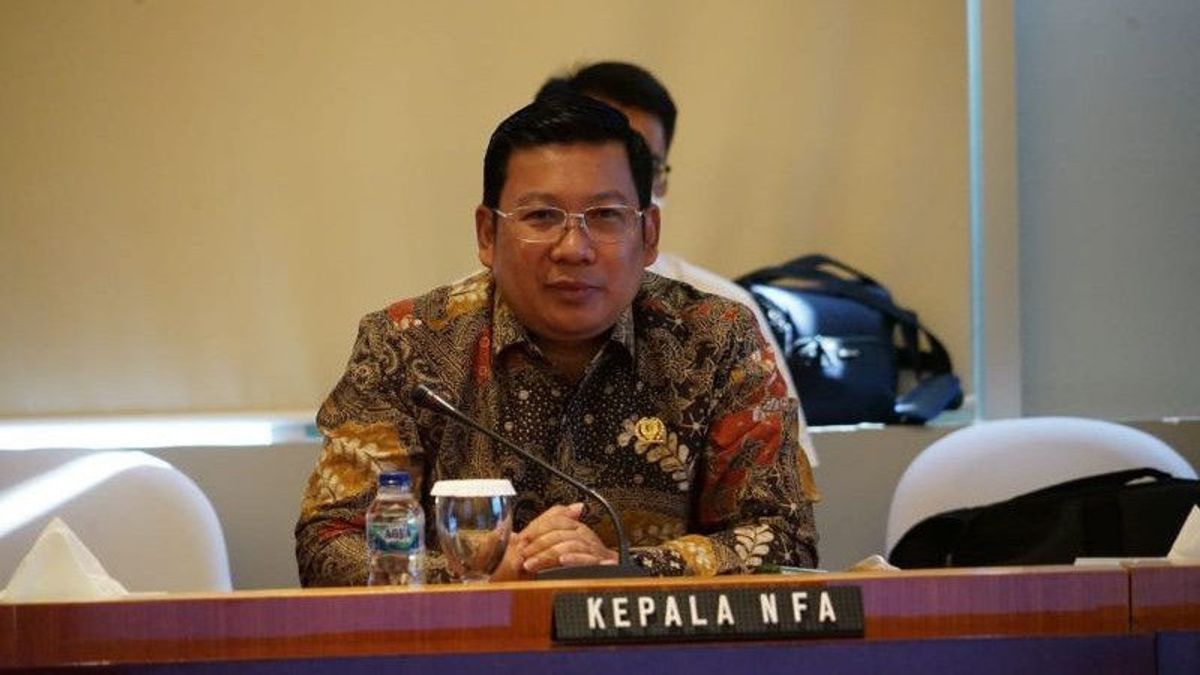JAKARTA - The government through the National Food Agency (NFA) has launched a Guideline for the Implementation of Rice Supply and Price Stabilization (SPHP) at the consumer level in 2023 to ensure the availability and affordability of these commodities.
The implementation instructions are derivatives and follow-up to Presidential Regulation Number 125 of 2022 concerning the Implementation of Government Food Reserves, Regulation of the National Food Agency (Perbadan) Number 12 of 2022 concerning the Implementation of Government Rice Reserves, and Agency Number 15 of 2022 concerning Stability of Supply and Rice Price, Corn and Soybeans at the Consumer Level.
Head of the National Food Agency Arief Prasetyo Adi said this implementation guideline is an important guideline for the implementation of the rice SPHP which is right on target and in accordance with good governance.
"This will be the basis for Perum Bulog as the operator assigned by the National Food Agency to carry out the SPHP program," he told reporters, Monday, January 9.
In general, Arief explained, the implementation of the Rice SPHP at the Consumer Level in 2023 will use Government Rice Reserves (CBP) in Bulog warehouses originating from direct purchases either purchased using Government Purchase Prices (HPP), flexibility prices, commercial stock diversion, or procurement from outside on government assignments.
"The implementation of the rice SPHP will be carried out throughout Indonesia through Bulog with a target distribution of at least 1.2 million tons or adjusted to market conditions," he said.
According to him, the 2023 rice SPHP will be held throughout the year from January to December 2023 with an intensity of monthly implementation referring to the development of the national average rice price collected from regional apparatus reports.
Through this rice SPHP, Bulog distributes rice at a price of Rp. 8,300 to Rp. 8,900 per kg according to the zoning distribution. For the areas of Java, Lampung, South Sumatra, Bali, West Nusa Tenggara, and Sulawesi Rp. 8,300 per kg.
Meanwhile, for Sumatra, except for Lampung and South Sumatra, East Nusa Tenggara and Kalimantan, Rp.8,600 per kg, and the Maluku and Papua regions amounting to Rp. 8.900 per kg.
The price is the purchase price in Bulog's warehouse and is valid until the stipulation of the National Food Agency Regulation which regulates the retail price policy of rice. Currently, the retail price has been set into the working area of the National Food Agency, we are also conducting a review to update the Purchase Price of the Government (HPP) for rice," he said.
To optimize implementation, Arief added, Bulog can carry out SPHP through direct market operations at the retail level or through distributors and partners in traditional or modern markets as well as places that are easy in other areas.
"The point is, the most important thing is that paying attention to selling prices up to the consumer level must be in accordance with the retail price that has been set. In addition, as a guarantee of quality, the rice sold must include price information, quality class, and net weight," he explained.
Arief added that the implementation of the rice SPHP at the consumer level aims to maintain the availability of supply and stability of rice prices so that people's purchasing power is maintained and inflation is controlled throughout Indonesia.
This is in line with the direction of the President of the Republic of Indonesia Joko Widodo (Jokowi) who requested that rice stocks and prices be properly maintained and calculated according to conditions in the field.
Arief continued, the president emphasized that rice reserves must be prepared properly so as not to cause an increase in prices in the market which will have an impact on rising inflation.
"Efforts to keep stocks and rice prices stable are very important and a priority, considering that rice is a staple food commodity consumed by the majority of Indonesians," said Arief.
Arief said, seeing the high rice relation to the public interest, the Government certainly has a great interest in maintaining stock stability and rice prices.
"The increase in macro rice prices will have an impact on inflation and poverty levels, while micro will have an impact on the large expenditure of families or households on rice which will affect household food security," he explained.
Based on data from the Central Statistics Agency (BPS) of 2021, rice contributed 5.20 percent to the amount of expenditure, the figure even increased to 25.87 percent for low-income households. In 2022, rice will contribute to the inflation weight of 3.33 percent.
The English, Chinese, Japanese, Arabic, and French versions are automatically generated by the AI. So there may still be inaccuracies in translating, please always see Indonesian as our main language. (system supported by DigitalSiber.id)













